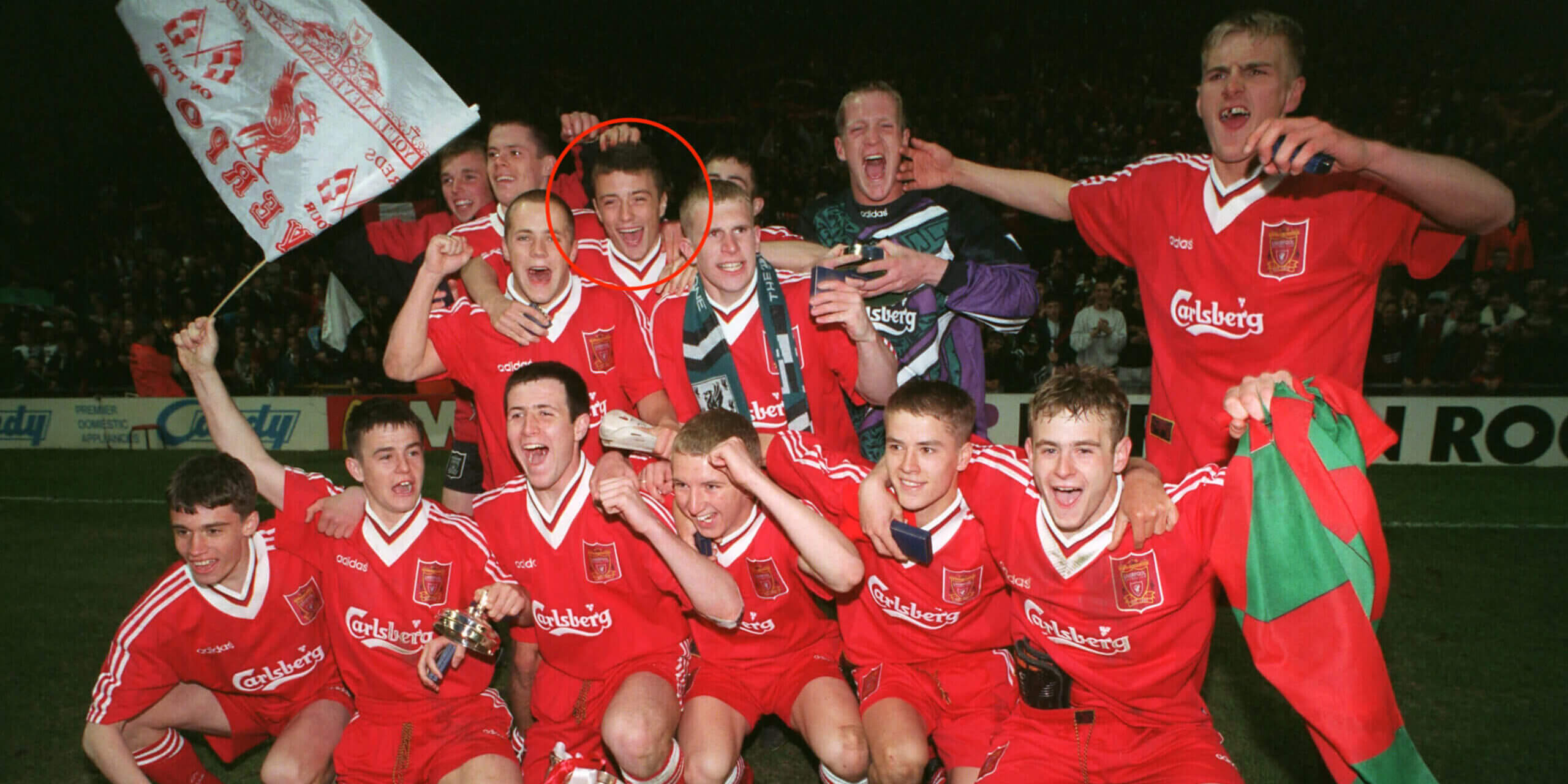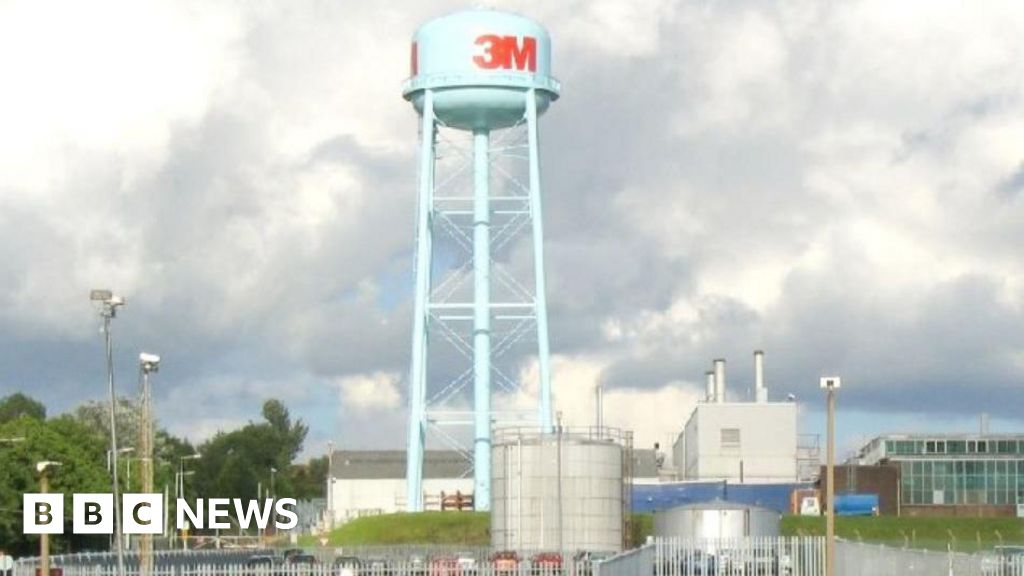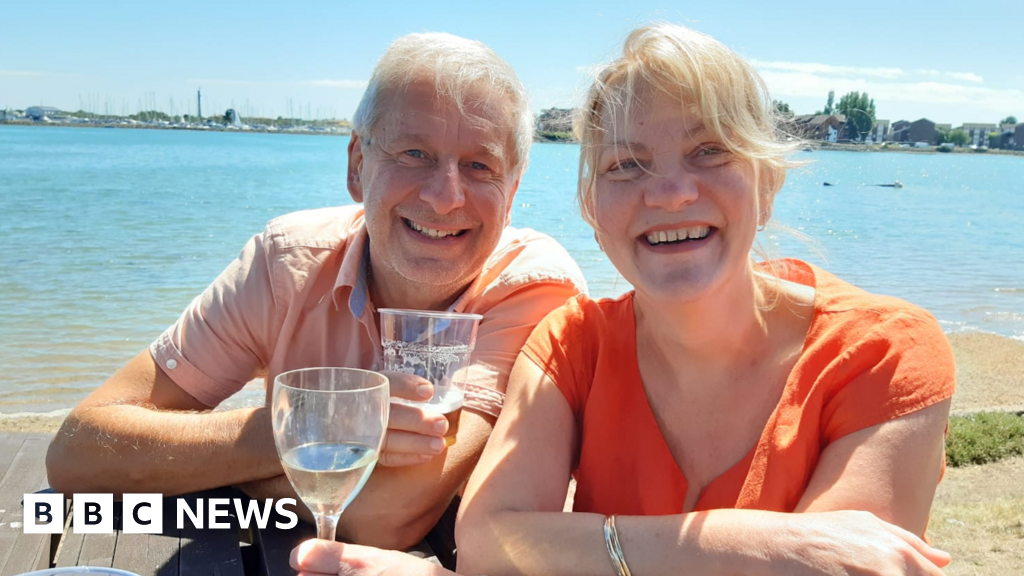
Jamie Cassidy – the Liverpool prodigy who became a cocaine conspirator
- Sports
- March 22, 2024
- No Comment
- 383
He appeared in the dock at Manchester Crown Court like a familiar-looking stranger, a vivid memory from a distant past.
Jamie Cassidy had once been one of the most promising young footballers at Liverpool, England’s most successful club, a player deemed good enough to train with his national team ahead of the 1996 European Championship.
Today, Cassidy was jailed for 13 years and three months for his part in a conspiracy involving South American drug cartels that saw 356kg (784lb) of cocaine with an estimated street value of £28million ($35.8m) flood cities across northern England.
Cassidy, now 46, did not have a “pivotal” role like his 50-year-old brother, Jonathan, who received 21 years and nine months, but it was nevertheless “significant”, according to the judge, Sir Ian Dove.
Jamie’s job was to “ensure things ran smoothly” once the drugs arrived in Liverpool from the Netherlands, hidden in modified vehicles. He acted upon instruction, being paid a wage for his “managerial” input, which involved taking care of collections and deliveries that amounted to around 150kg of the drug.
Huge profits were laundered every month but the Cassidys’ operation was stopped after the EncroChat messaging service, once the preferred tool of communication in the criminal community, was intercepted by French authorities.
Jonathan Cassidy and Nasar Ahmed, 51, pleaded guilty last month to conspiracy to import and supply class A drugs and to launder money, while Jamie admitted to supply and laundering. Like Jonathan, Ahmed received 21 years and nine months.
Having been held on remand since November 2020, former footballer Cassidy had more than three years to consider his future.
It might explain why on Wednesday, as he emerged from the steps that led from the cells in Manchester Crown Court, he seemed relaxed and focused, as the scale of the charges against him were laid bare in a legal setting for the first time.
In his closing notes, the judge suggested “it seemed likely” that Jamie had been drawn by his brother into a “business” that was also described as “sophisticated”.
Each of the offenders will serve half of their sentence before being released on licence.
Across a hearing that stretched over two days, there was only a brief mention of Cassidy’s life as a footballer whose talent was so vast that his name sometimes appears in the same sentences as true Liverpool greats.
In 1994, two summers before Cassidy lined up with future internationals Michael Owen and Jamie Carragher in the Liverpool Under-18s team that won the FA Youth Cup by beating a West Ham United side that featured Frank Lampard and Rio Ferdinand, he played for England as they reached the quarter-finals of Under-16 European Championship in the Republic of Ireland.

Liverpool, featuring Michael Owen (far right), won the 1996 FA Youth Cup final against Rio Ferdinand’s West Ham (Aubrey Washington/EMPICS via Getty Images)
As a centre-forward, the regard in which he was held was reflected by the fact he was given the No 10 shirt in that England squad while Emile Heskey, who six years later would join Liverpool from Leicester City for a record £11million fee, had to make do with No 12.
Carragher became a legendary figure at Liverpool, making 737 appearances, second on the club’s all-time list behind Ian Callaghan’s 857. Yet when it came to England junior selection, Cassidy was called up ahead of him and David Thompson, who later featured in 56 Liverpool first-team games before fruitful spells in the midfields of Coventry City and Blackburn Rovers.
Thompson came from Birkenhead, which is separated from Liverpool by the River Mersey. In the early 1990s, Cassidy and Carragher, born in the same school year, were regarded as the best two young players in the city for their age group.
While Carragher came from Bootle and went to Savio Salesian College, representing Sefton Boys, Cassidy played for Liverpool Boys having attended the Alsop comprehensive where future Liverpool manager Gerard Houllier taught when he lived in the city in the late 1960s and early ’70s.
Cassidy’s home turf was Walton and the warren of streets near City Road, close to Everton’s Goodison Park stadium, which became infamous in 1993 because of its proximity to the old railway line where two-year-old James Bulger was murdered by two 10-year-old boys.
Much of the reporting that followed painted an unremittingly bleak picture of the area and an “urchin” culture where children roamed freely after dark, causing havoc. There was little attention or sympathy given to a district that had been compared, in a paper published by the European Union, to some of the poorest parts of southern Italy and the old East Germany.

Before he joined Liverpool, Cassidy played for a Sunday league team affiliated with a pub called The Pacific. This brought him into contact with Carragher for the first time, because he was signed to another team in the same league, Merton Villa. Other young boys from The Pacific, such as Jon Murphy, Ged Hennigan and Dominic Morley, would make it into the youth systems of Liverpool and Everton. Yet Cassidy went the furthest.
In his early years with Liverpool, he played up front with Carragher. The pair were so good that the coaches at Liverpool allowed them to play two years above their age group, even though they knew they were not quite physically strong enough. This meant that, sometimes, one would replace the other at half-time.
To his family, Carragher is still “James”. He is only known as “Jamie” to the wider world because Steve Heighway, Liverpool’s academy director, started referring to him and Cassidy as “the two Jamies” when they were both selected for Lilleshall, the FA’s residential School of Excellence in the Midlands.
Upon returning to Merseyside from a visit to Lilleshall in 1995, Heighway wrote in his Liverpool match-day programme column, “Both boys are super players.”
David Thompson, Jamie Cassidy, Michael Owen and Jamie Carragher, Liverpool 1996 @Carra23 pic.twitter.com/CmHI8RTIaF
— Angies Liverpool (@angiesliverpool) April 15, 2020
Cassidy was also ‘Cass’, a player team-mates wanted on their side because of his subtle leadership qualities. His presence provided reassurance because of his consistency and his maturity. Some looked up to him, not only because of his talent but also because of his dress sense.
His football associates from the time – all of whom spoke to The Athletic on condition of anonymity due to the severity and scale of his criminal case – describe Cassidy as an “elegant” footballer, with a shot as ferocious as his tackles. If a challenge was there to be won, he relished it. In conversations, comparisons are made with Steven Gerrard, then three years his junior, and now one of the greatest players in Liverpool’s history.

While he was good in the air and an able runner, Cassidy was also left-footed, which gave him an added grace. Those who watched the youth teams at that time describe a footballer who had it all — one good enough to be invited to train with England’s senior squad, under Terry Venables, in the build-up to Euro 96.
The Liverpool team who won that FA Youth Cup is described by Carragher in his autobiography as a group of “scallies”, not necessarily high on talent but full of desire. Cassidy fitted right in, albeit playing on the left of midfield. That success was timely for Liverpool because the first team was under fire due to their performance in an FA Cup final defeat to arch-rivals Manchester United. Over the months that followed, Cassidy, Carragher, Owen and Thompson all got more exposure to senior training. Their performances were rewarded with new contracts, rising from £250 to £750 a week.

Jamie Cassidy at an England training session with Terry Venables
In December 1996, aged 18, Cassidy was given a squad number (22) and was selected on the bench for first-team game at Anfield against Sheffield Wednesday. Though he did not get on that day as Liverpool lost, 1-0, he was getting closer to a first-team debut.
Some of the coaches at Liverpool identified that he was different to Carragher and Thompson, who were obsessives. Carragher would treat training sessions like they were full-scale games and Thompson would tell senior figures in the squad that he was coming to take their place. Cassidy could be aggressive on the pitch but his otherwise calm demeanour led to questions over his body language.
Did he care enough? His team-mates thought so. This was evidenced when he flew into a tackle during a reserve game not long after snapping his anterior cruciate ligament (ACL). A leg break meant he spent 18 months out in total, with those injuries having an impact on three seasons, just at the point his peers were breaking into the first team and establishing themselves.
There was some belief that this period caused him to lose a yard of pace, particularly damaging as football at the highest level was becoming more about physicality, especially in midfield. One person with an understanding of Cassidy’s position describes him as being “really, really unlucky”.
After another long period out, team-mates would stare at Cassidy’s legs at Melwood, the club’s former training ground. Above specialist shin pads, which looked like they were shatterproof, it seemed as though one of his knees had doubled in size.
Owen became a global superstar because of his performances with England at the World Cup in 1998, and by the summer of 1999 he had represented Liverpool 86 times.
Carragher, meanwhile, had made it to 70 appearances, and Thompson had 25. Gerrard had also emerged from the youth ranks, playing in 13 games in the 1998-99 season.
Following a succession of setbacks and operations, Cassidy, aged 20, was still waiting for his first-team debut. All of this was playing out against a backdrop of vast cultural change at Liverpool instigated by manager Houllier, who was driving more professional standards. That shift ultimately led to some players, regardless of previous status, moving on.
According to administrators at the club, leading academy figures considered Cassidy to be a huge talent, though he was never quite in the same bracket as Owen and Carragher. These sources have told The Athletic that they cannot remember him causing any problems for the coaches, pointing only towards injuries as a reason he eventually left.
There was shock, however, when he signed for Cambridge United, a four-hour drive away, in 1999. Cambridge were fighting to stay in the third tier of English football; many at Liverpool believed Cassidy could have made a fresh start at a higher level, earning decent money, for example, in Division One (now the Championship — England’s second tier).

Cassidy at Cambridge United (PA Images/Alamy Stock Photo)
Quickly, Cassidy lost touch with the players at Liverpool with whom he’d spent his teenage years. Most of the band of brothers who had won the FA Youth Cup in 1996 suddenly had less in common, and while some fell into the non-League system at clubs such as Barrow, Droylsden and Vauxhall Motors, others became associated with the game’s amateur scene in Liverpool.
Having entered a relationship with a woman, Cassidy slipped off the radar entirely. Some wondered whether he was too embarrassed or proud to try to work his way back up the football ladder, given how highly rated he had been.

If he lost his love for the game, he did not show it at Cambridge, but he made little impression on a dressing room dominated by senior professionals.
He stood out mainly because he was a Scouser, far away from home. Though it was obvious in training sessions he was technically excellent, he could not emulate team-mates such as Trevor Benjamin and Martin Butler, who would both sign for clubs higher up the food chain in Leicester City and Reading.
In a season when Cambridge finished two places and four points above the relegation zone, Cassidy started just four league games, with another four appearances from the bench.
He did not strike one of Cambridge’s most senior players at the club as a bad lad. “Quite the opposite, I liked him — a really nice kid,” he said.
Nonetheless, he continued, he seemed the type of player “that might need a rocket up his a**e now and then”.
Cassidy’s career was over by the time he was 23. After brief spells at non-League sides Cambridge City and Northwich Victoria, he reappeared at Burscough, a sixth-tier club in west Lancashire, 18 miles north of Liverpool, partway through pre-season in the summer of 2001.
A match programme at the end of the subsequent campaign suggests he made just five appearances for the club, with three of them starts.
Money was tight at Burscough, and players were paid small sums, cash in hand. Yet the club were developing a reputation as a place where players could trampoline into the professional ranks, thanks to the manager John Davison, who worked as a schoolteacher, and his assistant, Peter King, who came from Liverpool and had a strong grip on a local football landscape where Burscough might naturally recruit.
Those who flourished at Burscough tended to be strikers, such as Michael Yates (who went to Dundee in the Scottish Premier League), Ryan Lowe (Shrewsbury Town), Robbie Talbot (Morecambe) and Lee McEvilly (Rochdale).

Cassidy, however, never really got going. One player thinks he arrived carrying a back injury. Had he been more established at the club, maybe he would have been sent to a specialist but he believes Burscough did not have the means to treat him.
After one training session, Cassidy seemed to disappear for a while. His absence was never explained. Though he returned to the squad, his stay at the club was ultimately brief. Even though he did play, some team-mates needed to be reminded of the data to prove it — he barely made an impression.
Elsewhere, Carragher and Owen were now Champions League players, having won their first trophies at Liverpool, lifting the League Cup, FA Cup and UEFA Cup (today’s Europa League) in the 2000-01 season. Cassidy, however, faded out of sight and mind.

Michael Owen with the 2000-01 FA Cup (Tony Marshall/EMPICS via Getty Images)
It is thought Cassidy turned to the building trade, where he worked with his father.
When he was arrested in 2020, a month after his brother Jonathan was apprehended after landing at Manchester Airport following a flight from Dubai, officers found an encrypted telephone with an Estonian SIM card in a search of his property.
On EncroChat, where drug deals were arranged with traffickers in the Netherlands who had connections to cocaine cartels from Bolivia, Brazil, Colombia and Ecuador, it was established by investigators that his user name was Nuclear Dog.
In April 2020, another EncroChat user going by Whisky Wasp engaged a contact by sending a photograph of his television screen. He was on Netflix, watching El Chapo, a dramatised TV series about a Mexican drug lord. Whisky Wasp joked that they shared the same birthday. He was, in fact, Jonathan Cassidy.
Judge Dove would later describe the comparison as a “stupid exaggeration”, albeit “one not so far from the truth to be fanciful”.
According to the UK’s Crown Prosecution Service (CPS), Jonathan was the “leading” figure behind a cocaine import operation that delivered quantities of the drug on an “industrial” scale.
On Wednesday, it was revealed that, between March and April 2020, the Cassidy brothers were using EncroChat almost every day.
After Jonathan brokered agreements with suppliers in the Netherlands, Jamie “acted on direction” in his “operational role”, ensuring the drugs made their way around the north of England. From there, a third man, Nasar Ahmed, who was sitting beside the Cassidys’ in the dock today, dealt with the money. On at least one occasion, an exchange was made using a reusable bag from the Asda supermarket chain.
It was revealed that when one of Jonathan’s couriers was stopped by police as he met a supplier, “it did not dent his enthusiasm for the next deal”, and the following day, he went to work on EncroChat again.
When a consignment arrived in England, Jamie, as Nuclear Dog, sent his brother a list of clients and their shares. He was, in effect, the book-keeper in the operation. Subsequent correspondence suggests the pair considered using another encrypted device offered by the Sky organisation at the end of the April, but any change of direction at that point would have been too late to avoid the authorities.
On June 13, an administrator at EncroChat told users that the company’s domain had been seized by a “government entity” and that the service could no longer guarantee security. That entity turned out to be the French intelligence services.
On the same evening, online records showed investigators that Ahmed searched for Emirates airline flights to the United Arab Emirates. He was arrested in Bury, in the north of Greater Manchester, the following morning.
On July 8, Jonathan used his iPad to read an article about Mark Fitzgibbon, a Liverpool fugitive who had been arrested in Portugal following 16 years on the run. He also read stories on the Manchester Evening News’ website about police operations in the city.
That evening, he drove to Manchester Airport and flew to Dubai, where he told an estate agent that he had a budget of £2.3million to spend on a villa, which was later furnished with a bed costing £22,000.
By the end of the September, he searched the internet again, this time for his brother’s name, after he had briefly left the United Kingdom. Investigators established that he was trying to find out whether Jamie had been arrested.
It seemed the pair were in the clear but, the following month, Jonathan was arrested on arrival at Manchester Airport after returning from Dubai, telling officers that he “did not know what they were talking about”.
Jamie was arrested a month later. His defence tried to argue that he was the first of the three men to admit his part, yet this admission only came only after a long battle to try to prove the EncroChat evidence as inadmissible.
The smashing of EncroChat has ultimately helped the National Crime Agency carry out “the UK’s biggest law enforcement operation”, one which has since “dismantled entire organised crime groups”, leading to 746 arrests and the seizure of £54million in cash and more than two tonnes of drugs.
On remand, Cassidy was described by prison officers as a “positive role model for his peers”. In the three years since his arrest, he had taken on a role for the Samaritans and one letter partly read out in court heard how he had “listened to others in crisis, helping prevent callers from taking their own lives”.
Amid the prison population, he lived with drug users, coming to understand the impact of his decisions as a dealer. He admitted to being “ashamed” of what he had done and, in sentencing, the judge removed two years from Cassidy’s term due to his “redemptive behaviour”.
Cassidy will, in time, have the chance to rebuild his life, but for those who remember him from his early days, there is just regret at how a special talent was derailed.
(Top photo: Liverpool celebrate winning the 1996 FA Youth Cup, with Jamie Cassidy circled; Aubrey Washington/EMPICS via Getty Images)
#Jamie #Cassidy #Liverpool #prodigy #cocaine #conspirator









